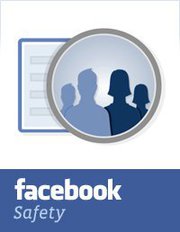By Lynette Owens
Facebook announced that it will soon unveil new services to help victims or witnesses of cyberbullying. As part of the White House summit on bullying prevention, Facebook hosted a panel at the White House today to announce some of these new features, but also to discuss the state of bullying, showcase relevant initiatives undertaken by each of the panelists, and answer questions from viewers.
As I watched the broadcast, I couldn’t help but think of how much had changed since 2010 began. Just over a year ago, the international spotlight was right here in Massachusetts after the horrific bullying, cyberbullying, and suicide of Phoebe Prince. It was on Facebook that she was dogged by her aggressors (in addition to other places), and also on Facebook that she was ridiculed after her death. It is hard to imagine how things may have differed for Phoebe and for anyone bullied on Facebook before or after her if these capabilities had existed. Would it have helped? Or would nothing have been different?
In the coming weeks, Facebook will be offering an expanded set of anti-bullying resources for kids, parents, teachers, and communities within their Safety Center.
Another new Facebook feature on its way is the ability for a user to more easily capture and report content that is harassing, threatening, or troublesome in any way to a trusted party (such as a parent). Kids are usually advised to share evidence of bullying with an adult or authority so it can be investigated accordingly, but the process to do this can be cumbersome. Facebook will allow users to capture the communication and send it on with just a few clicks.
The problem is it’s not enough. This is no fault of Facebook’s; I give them credit for finding ways to stand up to bullying and help their users do the same. But the issue is what happens after something is reported. Phoebe’s mother allegedly notified the school of what was happening, but nothing was done. Countless other cases have gone the same way. No reporting tool – however simplified – will fix this.
Bullying intervention today can be complicated when cell phones and social networks are involved. Early signs of cyberbullying can be harder to detect (though presumably easier to track), and the Internet is not bounded by the playground fence, so schools and parents are unclear of who should or can take action and when.
Here in Massachusetts, and as a result of Phoebe’s death, we enacted a law that has fueled an enormous amount of action to solve this problem at a community level – students, parents, schools, religious groups, and law enforcement are all involved. But law or no law, communities everywhere need to come together if they really want to deal with bullying. It shouldn’t take a tragedy before taking action. It takes a zero tolerance culture, shared definitions of bullying and cyberbullying, clear roles and responsibilities among all involved and empowered youth to keep bullying in check.
I do think today’s White House summit was aptly named. Our goal as a society should be on prevention not intervention, and on getting us as closer to never needing Facebook’s anti-bullying ‘report’ button.
For more information on dealing with cyberbullying, go to www.trendmicro.com/internetsafety
For a great way to engage youth and let them speak out and take action against bullying, enter the “What’s Your Story?” Internet safety video contest @ whatsyourstory.trendmicro.com (entry deadline April 5)
For other great resources, go to: www.connectsafely.org, www.facebook.com/help/?safety, www.stopbullying.gov, www.commonsensemedia.org, www.webwisekids.org
Lynette Owens is Vice President of Consumer Education & Marketing at Trend Micro and Founder of the company's signature Internet Safety for Kids and Families program. With 30+ years in the tech industry, Lynette oversees global initiatives to help deliver the technology tools and education that people of all ages need to keep themselves and their families safe online. She serves on the advisory boards of the Identity Theft Resource Center's Alliance for Identity Resilience, the Global Anti-Scam Alliance, and INHOPE.
